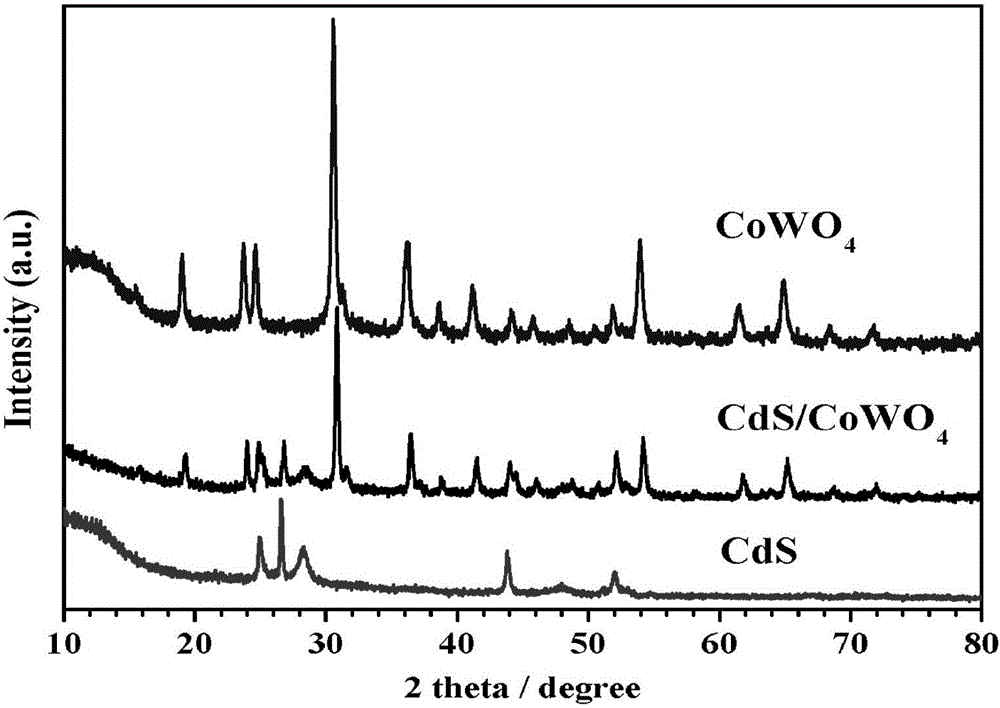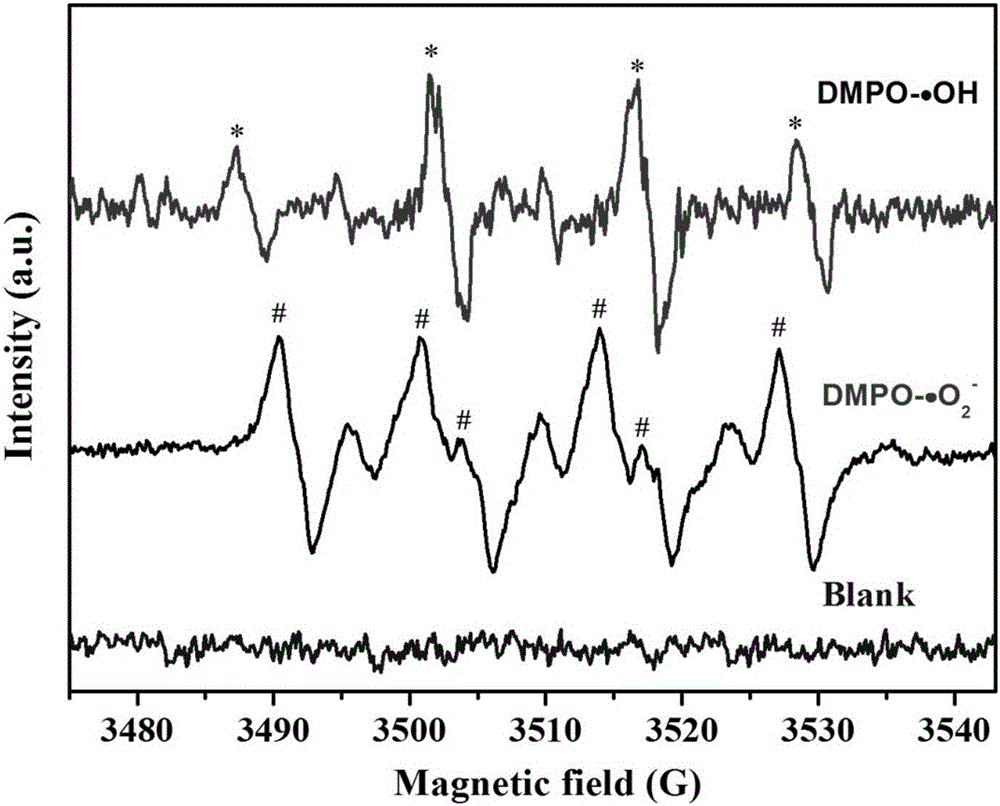Method for preparing CdS/CoWO4 heterojunction composite photocatalyst
A composite light and catalyst technology, applied in physical/chemical process catalysts, chemical instruments and methods, chemical/physical processes, etc., can solve the problems of serious electron-hole recombination and low catalytic activity, and achieve regular morphology and dispersion The effect of good properties and complete crystallization
- Summary
- Abstract
- Description
- Claims
- Application Information
AI Technical Summary
Problems solved by technology
Method used
Image
Examples
Embodiment 1
[0017] Example 1CdS / CoWO 4 Preparation of nanorods
[0018] Add the solution containing 1mmol cobalt chloride to the solution containing 1mmol sodium tungstate, adjust the pH value of the mixed solution to 8 with 1mmol / L sodium hydroxide solution, stir it magnetically, and then hydrothermally react at 180°C for 24 hours , the precipitate obtained by centrifuging and washing with water, and drying at 60°C to obtain cobalt tungstate nanoparticles; take the prepared cobalt tungstate nanoparticles and dissolve them in deionized water, ultrasonically disperse them, and add equimolar thiourea under stirring conditions and cadmium acetate, control the molar ratios of cadmium acetate and cobalt tungstate to be 0.1, 0.3, 0.5, 1 and 1.5 respectively, stir and mix evenly and carry out hydrothermal reaction at 180°C for 24 hours, and the blue product obtained after the reaction Wash with deionized water and ethanol, filter, and dry in a constant temperature drying oven at 60°C.
Embodiment 2
[0019] Example 2CdS / CoWO 4 Characterization and Analysis of Heterojunction Composite Photocatalysts
[0020] like figure 1 As shown, it can be seen from the figure that the composite sample has both CdS and CoWO 4 characteristic peaks, indicating that we have successfully prepared CdS / CoWO 4 Heterojunction composite photocatalysts.
[0021] like figure 2 As shown, pure CoWO can be seen in (a) 4 It is a nanoparticle with a size of about 30-50nm. The presence of CdS nanoparticles can be seen in the picture (b), and the size of the nanoparticle is about 5-10nm. The picture (c) is a transmission high-resolution electron microscope analysis of the prepared composite material As a result, CdS can be seen attached to CoWO 4 The surface of nanoparticles, (d) shows the presence of cobalt, tungsten, sulfur, cadmium, and oxygen elements.
[0022] like image 3 As shown in the figure, the presence of superoxide radicals and hydroxyl radical active species can be clearly seen in t...
Embodiment 3
[0023] Example 3CdS / CoWO 4 Visible light catalytic activity experiments of heterojunction composite photocatalysts
[0024] (1) Prepare a methylene blue solution with a concentration of 10 mg / L, and place the prepared solution in a dark place.
[0025] (2) Weigh CdS / CoWO 4 Heterojunction composite photocatalyst 100mg (when CdS and CoWO 4 The molar ratios are 0.1:1, 0.3:1, 0.5:1, 1:1, 1.5:1 and the samples obtained are respectively marked as C1, C2, C3, C4, C5), respectively placed in the photocatalytic reactor, adding 100mL of the target degradation solution prepared in step (1) was stirred magnetically for 30 minutes. After the composite photocatalyst was dispersed evenly, the water source and light source were turned on to carry out the photocatalytic degradation experiment.
[0026] (3) Draw the photocatalytic degradation solution in the reactor every 10 minutes, centrifuge and use it for the measurement of ultraviolet-visible absorbance.
[0027] (4) by Figure 4 It c...
PUM
| Property | Measurement | Unit |
|---|---|---|
| size | aaaaa | aaaaa |
| size | aaaaa | aaaaa |
Abstract
Description
Claims
Application Information
 Login to View More
Login to View More - R&D
- Intellectual Property
- Life Sciences
- Materials
- Tech Scout
- Unparalleled Data Quality
- Higher Quality Content
- 60% Fewer Hallucinations
Browse by: Latest US Patents, China's latest patents, Technical Efficacy Thesaurus, Application Domain, Technology Topic, Popular Technical Reports.
© 2025 PatSnap. All rights reserved.Legal|Privacy policy|Modern Slavery Act Transparency Statement|Sitemap|About US| Contact US: help@patsnap.com



